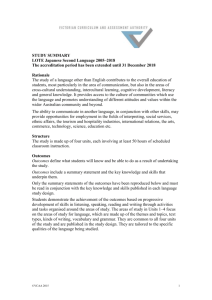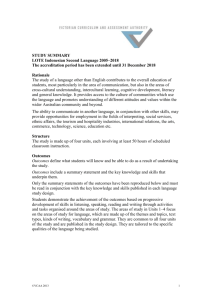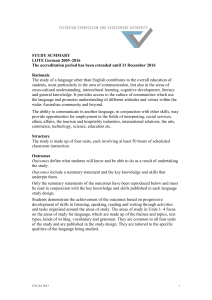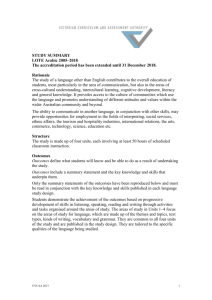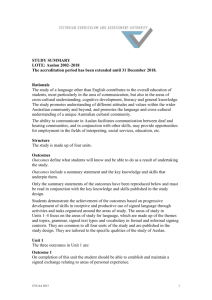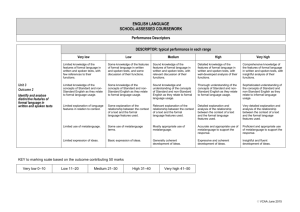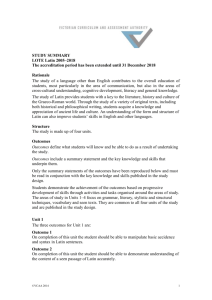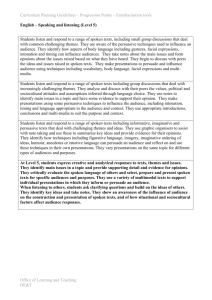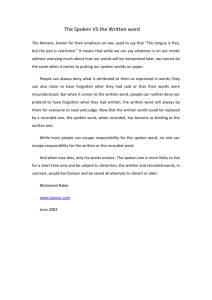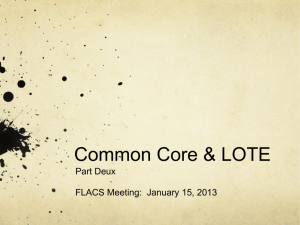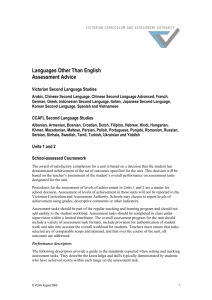Japanese First Language Study Summary
advertisement
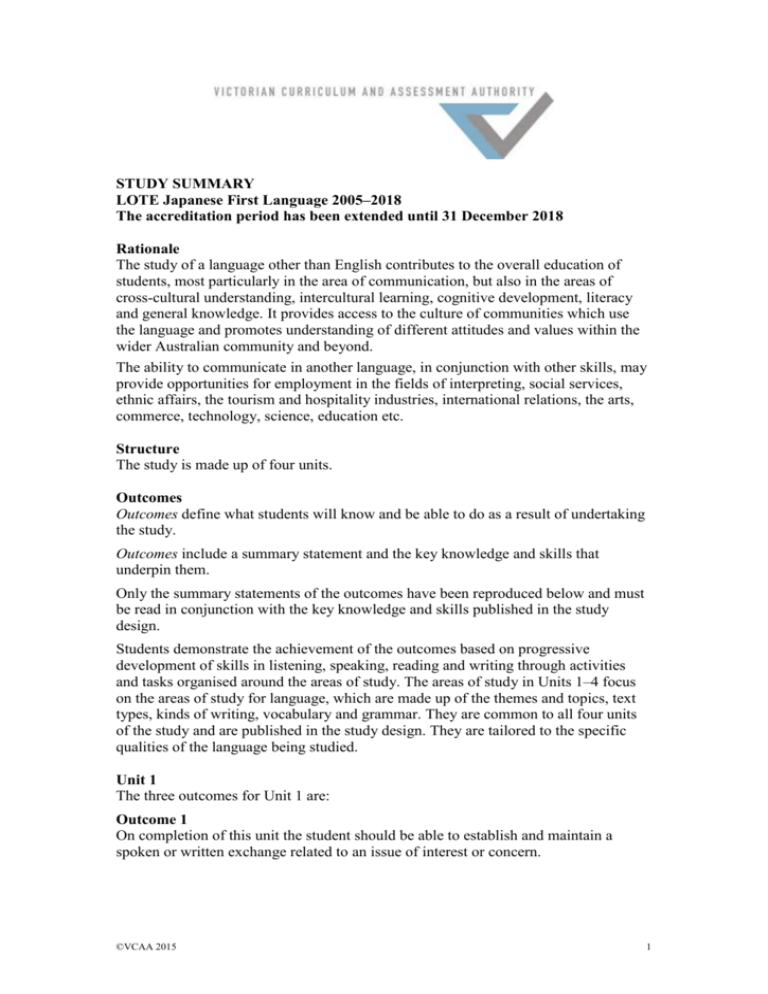
LOTE FIRST LANGUAGES 2005–2018 STUDY SUMMARY STUDY SUMMARY LOTE Japanese First Language 2005–2018 The accreditation period has been extended until 31 December 2018 Rationale The study of a language other than English contributes to the overall education of students, most particularly in the area of communication, but also in the areas of cross-cultural understanding, intercultural learning, cognitive development, literacy and general knowledge. It provides access to the culture of communities which use the language and promotes understanding of different attitudes and values within the wider Australian community and beyond. The ability to communicate in another language, in conjunction with other skills, may provide opportunities for employment in the fields of interpreting, social services, ethnic affairs, the tourism and hospitality industries, international relations, the arts, commerce, technology, science, education etc. Structure The study is made up of four units. Outcomes Outcomes define what students will know and be able to do as a result of undertaking the study. Outcomes include a summary statement and the key knowledge and skills that underpin them. Only the summary statements of the outcomes have been reproduced below and must be read in conjunction with the key knowledge and skills published in the study design. Students demonstrate the achievement of the outcomes based on progressive development of skills in listening, speaking, reading and writing through activities and tasks organised around the areas of study. The areas of study in Units 1–4 focus on the areas of study for language, which are made up of the themes and topics, text types, kinds of writing, vocabulary and grammar. They are common to all four units of the study and are published in the study design. They are tailored to the specific qualities of the language being studied. Unit 1 The three outcomes for Unit 1 are: Outcome 1 On completion of this unit the student should be able to establish and maintain a spoken or written exchange related to an issue of interest or concern. ©VCAA 2015 1 LOTE FIRST LANGUAGES 2005–2018 STUDY SUMMARY Outcome 2 On completion of this unit the student should be able to listen to, read and reorganise information and ideas from spoken and written texts. Outcome 3 On completion of this unit the student should be able to produce a personal response to a fictional text. Unit 2 The three outcomes for Unit 2 are: Outcome 1 On completion of this unit the student should be able to participate in a spoken or written exchange focusing on the resolution of an issue. Outcome 2 On completion of this unit the student should be able to listen to, read, and extract and compare information and ideas from spoken and written texts. Outcome 3 On completion of this unit the student should be able to produce an imaginative piece in spoken or written form. Unit 3 The three outcomes for Unit 3 are: Outcome 1 On completion of this unit the student should be able to express ideas through the production of original texts. Outcome 2 On completion of this unit the student should be able to analyse and use information from spoken texts. Outcome 3 On completion of this unit the student should be able to exchange information, opinions and experiences. Unit 4 The two outcomes for Unit 4 are: Outcome 1 On completion of this unit the student should be able to analyse and use information from written texts. Outcome 2 On completion of this unit the student should be able to respond critically to spoken and written texts which reflect aspects of the language and culture. Entry There are no prerequisites for Units 1, 2 and 3. Students must undertake Unit 3 prior to undertaking Unit 4. ©VCAA 2015 2 LOTE FIRST LANGUAGES 2005–2018 STUDY SUMMARY Assessment Satisfactory Completion Demonstrated achievement of the set of outcomes specified for the unit. Levels of Achievement Unit 1 and 2 Individual school decision on levels of achievement. Unit 3 and 4 School-assessed coursework and end-of-year examinations: Unit 3 school-assessed coursework: 25 per cent Unit 4 school-assessed coursework: 25 per cent Examinations*: oral component 10 per cent written component 40 per cent *A single grade is awarded ©VCAA 2015 3
